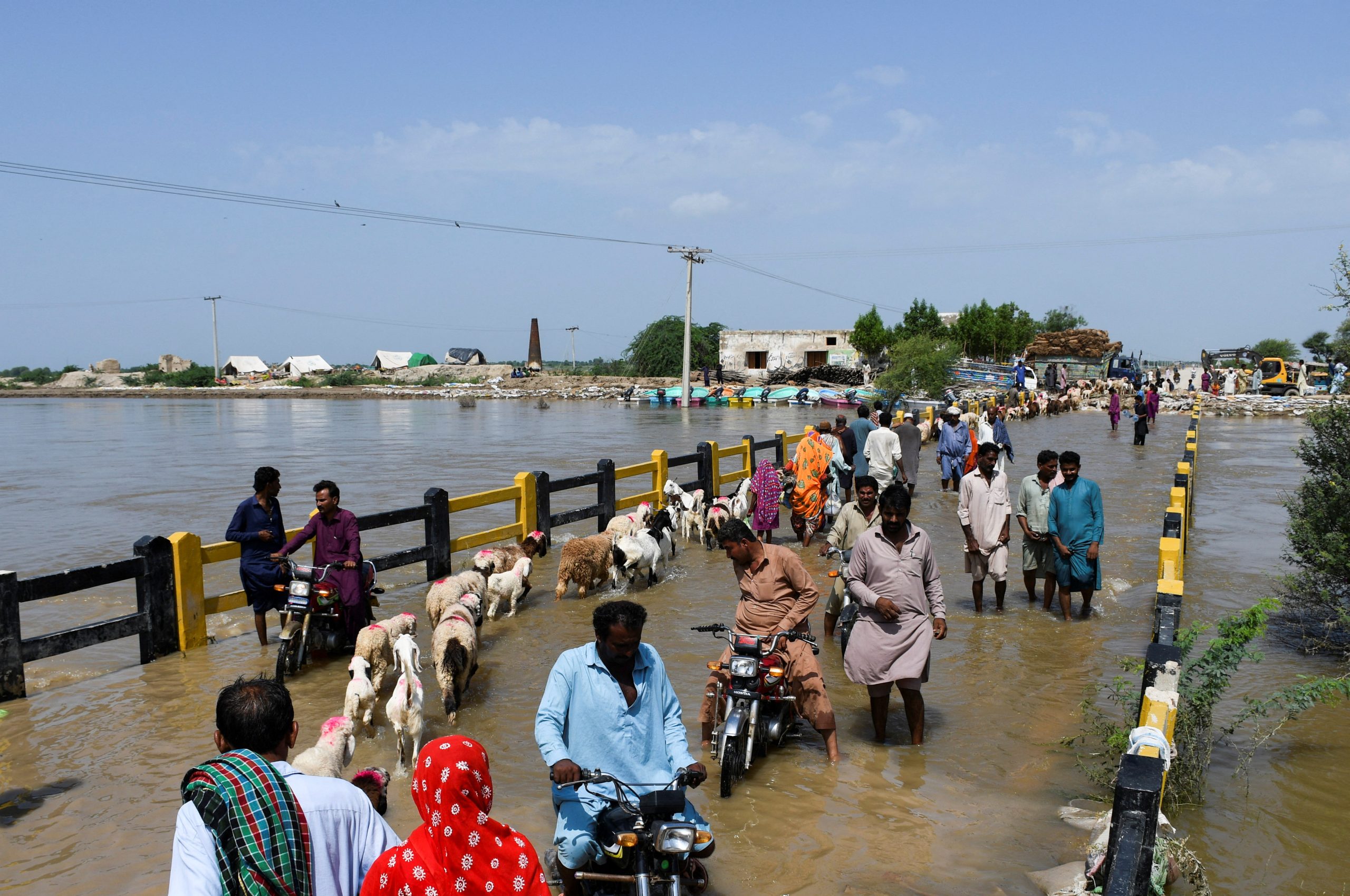
[elfsight_social_share_buttons id=”1″]
Global aid has begun arriving in Pakistan as the scale of flood devastation unfolds, with planes carrying tents, food, and medicines coming from China, Turkey, and the United Arab Emirates, the foreign office said on Wednesday.
Abnormal heavy monsoon rains triggered the floods that have submerged a third of the country and killed at least 1,191 people, including 380 children. The United Nations has appealed for $160 million to help with what it calls an “unprecedented climate catastrophe”.
Hundreds of thousands of displaced people are in urgent need of shelter, food, and clean water, with the threat of more flooding to come on Wednesday.
Pakistan has received nearly 190% more rain than the 30-year average in the quarter through August this year, totaling 15.38 inches. Sindh province in the south, with a population of 50 million, was hardest hit, getting 466% more rain than the 30-year average.
The Indus river, which runs down the spine of Pakistan from the Himalayas to the southern plains, and the Kabul, which enters the country in the northwest from Afghanistan, have reached “high to very high flood” levels that are likely to continue rising over the next 24 hours, the National Disaster Management Authority (NDMA) said.
It said 480,030 displaced persons have been shifted to refugee camps.
Foreign Minister Bilawal Bhutto-Zardari accompanied diplomats from 20 countries on a flight over the flooded regions which Climate Change Minister Sherry Rehman has said comprise a third of the country.
Bhutto-Zardari said the international response had been encouraging. Among the deliveries, four Chinese planes had delivered a total of 3,000 tents and other relief goods, the foreign office said.
International aid agencies have asked for a relaxation of restrictions on imports of food from Pakistan‘s old rival and neighbor India, Finance Minister Miftah Ismail said.
“It will take a long time to bring the situation under control,” Rehman told a news conference, adding that the devastation had been going on for nine weeks.
“There is a severe issue of clean drinking water in the flooded areas,” she said. “Diseases are spreading.”
6.4 million in need of aid
Villager Fayyaz Ali, 27, in Sindh’s hard-hit Shikarpur district, has managed to get his family to safety but has little hope of saving his small home.
“The house is going to fall at any moment. It’s inundated,” Ali told Reuters as he sat on higher ground. “I know it is no more, but I can’t just go away.”
Like many villagers, Ali said he had yet to receive any help.
Main roads running above the fields have become refuges where people with their bundles of belongings and farm animals seek shelter from the sun and rain under plastic.
The World Health Organization said over 6.4 million people were in dire need of humanitarian aid, including refugees.
“Access to health facilities, healthcare workers, and essential medicines and medical supplies remain the main health challenges for now,” WHO said in a statement.
Some 888 health facilities have been damaged, it added.
Army helicopters have been busy plucking stranded families from rooftops and patches of dry land and dropping food in inaccessible areas, mainly in northern and southwestern Pakistan.
Colossal volumes of water are pouring into the Indus river, spilling out along its length and leaving vast tracks of land submerged.
Flash floods have swept away homes, businesses, infrastructure, and crops. The government says 33 million people, or 15% of the 220 million population, have been affected.
The floods have washed away standing and stored crops that officials say will likely lead to a food shortage, with prices of edible items shooting up in a South Asian country already suffering from 24.9% inflation.
General Akhtar Nawaz, chief of the national disaster agency, has said that more than two million acres of agricultural land have been flooded.
“The rice crop has been washed away,” Prime Minister Shehbaz Sharif told reporters after visiting northern Pakistan. “Fruit and vegetables are gone.”
He said floodwaters had swept away 700,000 livestock.
Early estimates have put the flood damage at more than $10 billion, the government has said.
Copyright 2022 Thomson/Reuters
